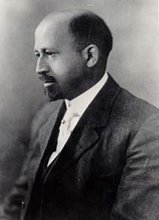PHNOM PENH, Cambodia — It may be the only place in Cambodia where the children are nicknamed Homey, Frog, Floater, Fresh, Bugs and Diamond.
And there are not many places like this small courtyard, thumping with the beat of a boom box, where dozens of boys in big T-shirts are spinning on their heads and doing one-hand hops, elbow tracks, flairs, halos, air tracks and windmills. And, of course, krumping.
It is a little slice of Long Beach, Calif., brought here by a former gang member by way of a federal prison, an immigration jail and then expulsion four years ago from his homeland, the United States, to the homeland of his parents, Cambodia.
The former gang member is Tuy Sobil, 30, who goes by the street name K.K. The boys are Cambodian street children he has taken under his wing as he teaches them the art he brought with him, break dancing, as well as his hard lessons in life.
K.K. is not here because he wants to be. He is one of 189 Cambodians who have been banished from the United States in the past six years under a law that mandates deportations for noncitizens who commit felonies. Hundreds more are on a waiting list for deportation. Like most of the others, K.K. is a noncitizen only by a technicality. He was not an illegal immigrant. He was a refugee from Cambodia’s Khmer Rouge “killing fields” who found a haven in the United States in 1980.
He was an infant when he arrived. In fact, he was born in a refugee camp in Thailand and had never seen Cambodia before he was deported. But K.K.’s parents were simple farmers who failed to complete the citizenship process when they arrived.
Like some children of poor immigrants, K.K. drifted to the streets, where he became a member of the Crips gang and a champion break dancer. It was only after he was convicted of armed robbery at 18 that he discovered that he was not a citizen.
Like many deportees, he arrived in Cambodia without possessions and without family contacts. He was a drug counselor at first and then founded his break dancing club, Tiny Toones Cambodia, where he now earns a living teaching about 150 youngsters and reaching out to hundreds more.
With the financial support of international aid groups like Bridges Across Borders, based in Graham, Fla., he has expanded his center into a small school that teaches English and Khmer and computers in addition to back flips, head stands and krumping, or crazy dancing.
Full article at the New York Times
The article above is about an American cultural art form (hip hop and breakdancing) making its mark overseas in interesting ways through an unlikely social worker -- a deportee to Cambodia from California.
Below is a couple of their YouTube videos.















No comments:
Post a Comment